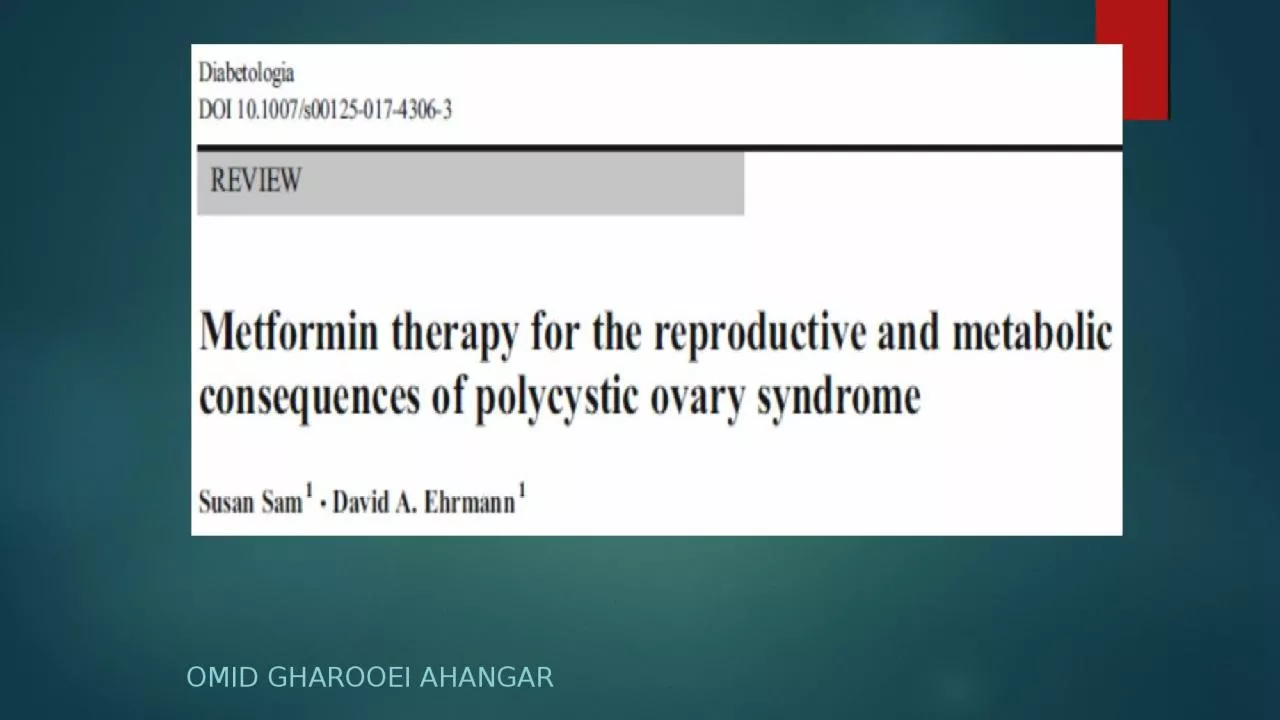PPT-Omid gharooei ahangar
Author : lucinda | Published Date : 2024-02-09
definition PCOS is the most common form of chronic anovulation associated with androgen excess it occurs in perhaps 5 to 10 of reproductiveage women The diagnosis
Presentation Embed Code
Download Presentation
Download Presentation The PPT/PDF document "Omid gharooei ahangar" is the property of its rightful owner. Permission is granted to download and print the materials on this website for personal, non-commercial use only, and to display it on your personal computer provided you do not modify the materials and that you retain all copyright notices contained in the materials. By downloading content from our website, you accept the terms of this agreement.
Omid gharooei ahangar: Transcript
Download Rules Of Document
"Omid gharooei ahangar"The content belongs to its owner. You may download and print it for personal use, without modification, and keep all copyright notices. By downloading, you agree to these terms.
Related Documents





